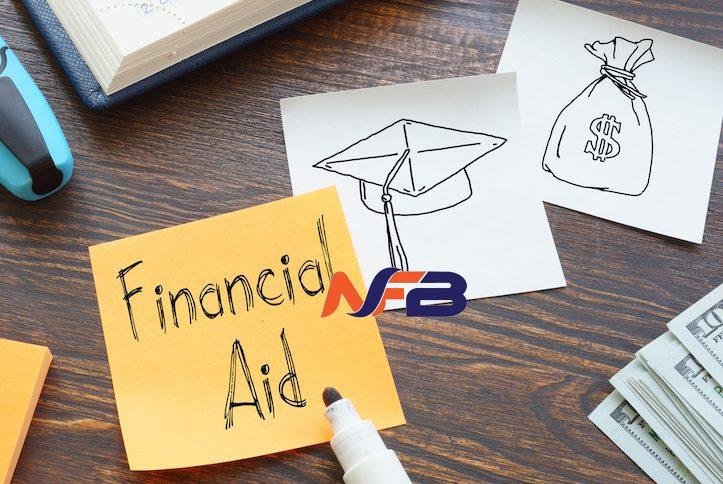Education has become more costly than ever before, and figuring out how to pay high fees for college is a daunting task. The US government itself provides a solution to this problem by offering financial funding for higher education. Financial aid is basically funding in the United States provided by the federal or state government, private organizations, or educational institutes to students who are interested in attending a post-secondary educational institution in the United States. This funding assists them in covering the majority of the educational costs. All a student has to do is complete the Free Application for Federal Student Aid (FAFSA) form. However, navigating the landscape of financial aid is not as easy as it may sound. There are a lot of myths and misconceptions about financial aid grants, which can result in wrong decision-making and missing potential opportunities. Every year, thousands of students fall prey to these myths and lose their chances of securing financial aid to support their education. So, in this blog, we will shed light on such myths and debunk them with facts to help you make correct decisions about securing financial aid.
Myth 1: I’ll have to repay financial aid once I graduate
It’s the most common myth that you have to pay the money back once you graduate. There are certain types of US financial aid, like student loans, that need to be repaid, but not all types of financial aid need repayment. Basically, there are two types of financial aid – Gift aid and self-help aid. Grants and scholarships come under gift aid that does not require any repayment, whereas loans come under self-help aid that needs repayment that too with interest. Therefore, to secure the right type of financial aid, it’s crucial to read and understand the terms and conditions properly and check repayment requirements.
Myth 2: The FAFSA is too Hard to Fill Out
Many people think that FAFSA is too hard to fill out, but the reality is FAFSA has come a long way now, and it’s easier than ever before to fill it out online. In recent years, many changes have been made to simplify the FAFSA process. The form includes various questions related to the student and their family to determine eligibility. Besides that, you are only asked the questions that are pertinent to you because the form employs “skip logic.” Not only that, but most of the information is readily available on family tax returns so that you can transfer it directly to FAFSA. According to the data, after all improvements, the average time to fill out a FAFSA form is just 21 minutes.
Read Also:- How2Invest
Myth 3: My Grades aren’t Good Enough for me to get Aid
Some people think that financial aid is only available for A-grade students, and students with lower grades cannot get the aid, which is one of the biggest misconceptions about financial aid. In reality, having a 4.0 GPA won’t guarantee a scholarship; the eligibility is actually not linked solely to your academic grades and performance. Although there are some types of financial aid that consider grades, a majority of financial grants, like federal grants, loans, etc., consider your financial requirements, leadership, etc., and not grades while allotting financial aid. However, you still have to maintain a minimum satisfactory grade to continue receiving financial aid.
Myth 4: Only Low-Income Families Qualify for Financial Aid
It’s a myth that financial aid is only meant for low-income families, and if someone’s parents earn more money, they don’t qualify for financial aid. In reality, there are two types of financial aid in this situation – need-based and merit-based. Need-based financial aid does consider financial circumstances and income, but merit-based financial aid is also available for families with higher incomes. Most of the colleges consider FAFSA to determine eligibility and not just the income.
Myth 5: Private Scholarships Are Hard to Find
Private scholarships are a popular type of financial aid in the US besides grants. Scholarships rely on specific criteria, and they are mostly merit-based, unlike grants that are need-based. Just like grants, even scholarships do not require repayment. However, some people believe that they are hard to find, which is a common misconception. There is an array of private scholarships available in the market, and some of them even go unclaimed due to a lack of proper research and reach. So, you can find such scholarships through online platforms, community organizations, social media, etc.
Myth 6: You Only Have to Fill Out the FAFSA Once
It’s a common myth that causes loss to many students every year. The reality is that FAFSA is filled out annually, and you need to fill out this form every year to qualify for financial aid for the complete program. Moreover, even eligibility changes every year, so to renew and update, staying informed about the changes and reapplying every year is mandatory. Filling out the form the second and third times will be simple because you’ll already have the knowledge and application pre-populated information.
Myth 7: Students from Minority Groups receive the most Financial Aid
This is a complete myth, as FAFSA, the most common financial aid application, does not even consider ethnicity and age. Financial aid is available for students from all backgrounds who need financial assistance to continue their education. It depends on the student and their family’s income, household, financial needs, academic performance, extracurricular activities, and many more, but not ethnicity. Students need to explore a variety of financial aid options and check their eligibility before applying.
Myth 8: There is a Lot of Competition in securing Financial Aid, and I cannot get it
Every field has some level of competition, but it’s a myth that you cannot get financial aid due to competition. If you do complete research about the options available and choose the one that fits your requirements, and for which you are eligible, there is no need to think that you cannot get it. Have some confidence and faith in yourself and apply for the best one.
Read Also:- Online Tutoring
Conclusion
In conclusion, we have discussed some prevailing myths about US financial aid that generally take away the chances of thousands of students who can get financial aid and continue their studies. We have debunked them with facts and reality and provided the actual information to the readers in order to help them secure financial aid for funding their higher education. Just make sure to submit your FAFSA before the deadline in order to become eligible for securing financial aid.












Leave a Reply